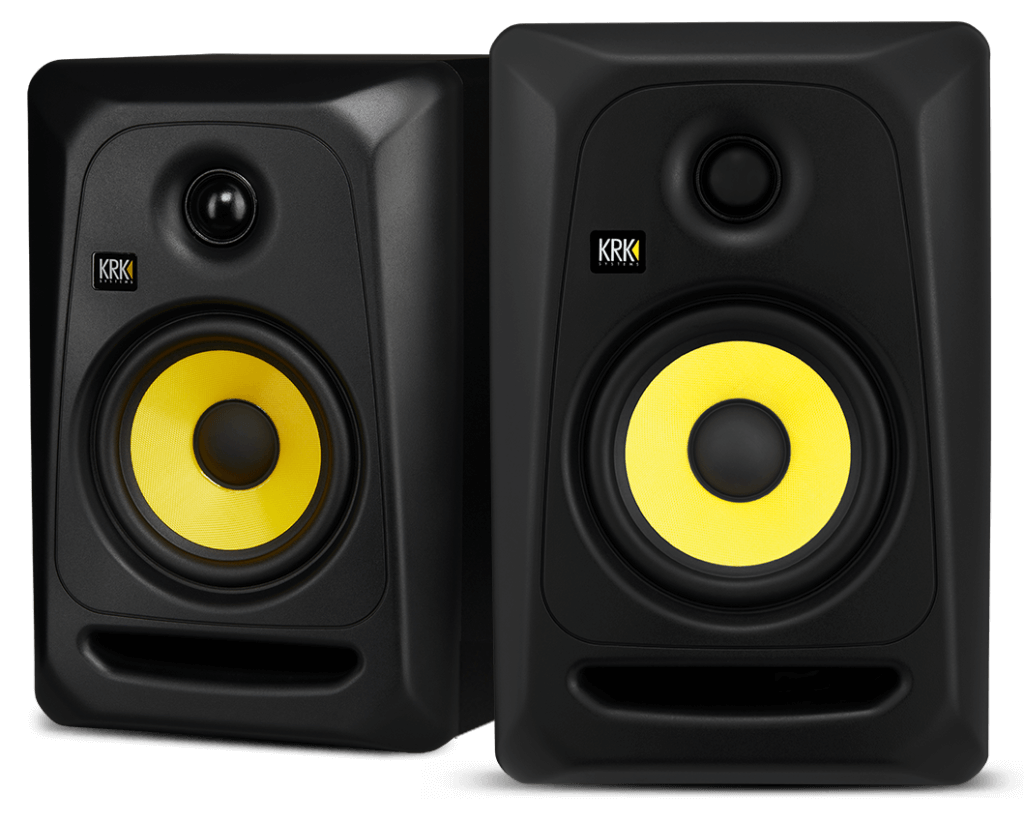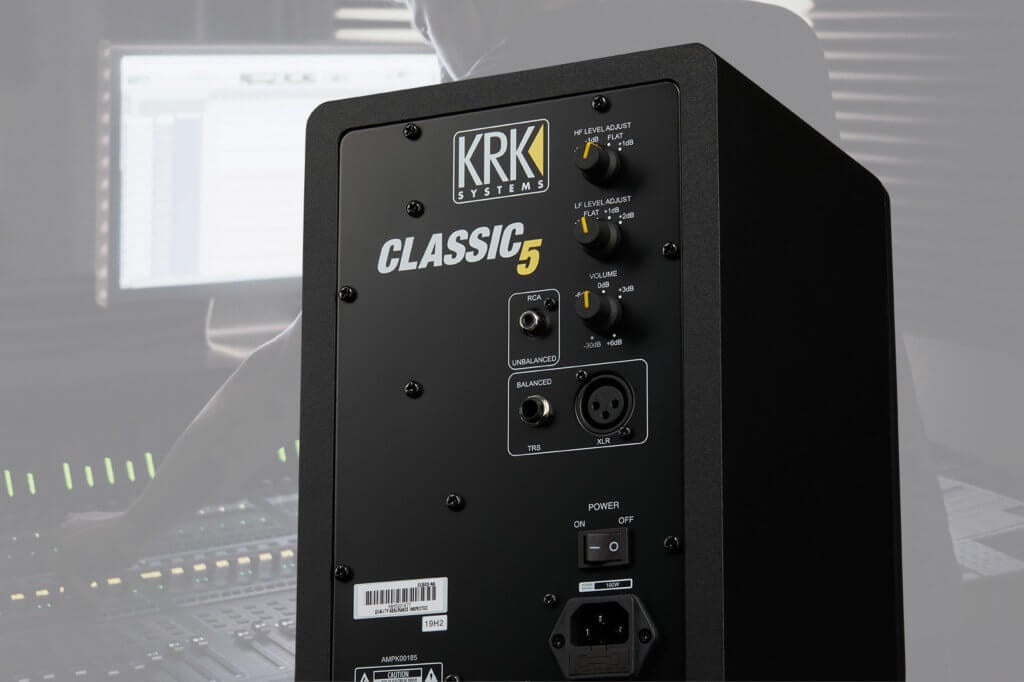
When it comes to studio monitors, affordable speakers are usually meant as a supplement to another pair of high-end units, mostly to see how a mix will sound in contrast. However, when a set comes along that is affordable AND can hang with more expensive units, take a listen. KRK has something to say with their classic offering, the CLASSIC 5.
With a layered 5” glass aramid driver covering the lower frequencies and a 1” soft dome tweeter, it’s very nicely balanced right out of the box. It should be, it was designed using concepts from KRK’s renowned ROKIT line. We connected them to our Focusrite 2i2 interface using the XLR balanced inputs with no issues. There are also connections for RCA and ¼” TRS inputs if needed.
Tweak-ability is also available, and depending upon the acoustics of the room they’re in, the high frequency adjustment controls range from -2dB to +1dB, while the low frequency runs from -1dB to +2dB. There is a flat setting, which is the obvious starting point, but the user gets a ton of flexibility not only to adjust for the room dynamics, but for the type of music they’re working with.
We put the CLASSIC 5 monitors through their paces, doing guitar (acoustic and electric) as well as bass guitar during tracking sessions, and they delivered fantastically. There’s plenty of clarity and depth that works well musically, especially in the flat setting. When we boosted the lower frequencies, you could really hear and feel the difference. So, keep that in mind if doing a session that really goes low (EDM peeps, we’re looking at you). You may also wish to decouple them from your desk, either with short risers or iso-pads from someone like Auralex.

When using them in a mixing situation, the EQ controls are the user’s friend. Classic rock has their frequency ranges, and Euro-death metal has theirs. Setting the HF & LF to what works for that particular application really enhances the session and can, at times, help to zone in on any EQ issues that may be happening with your particular space’s quirks. Again, the LF control really can color things in a big way, so keep that in mind and dial in judiciously. We were able to tweak things to our liking with the dials, but one great thing we noticed is that the lows didn’t get muddy or flubby in a bad way, there was just more, a lot more. Depending on your session, this may be a good thing, or a bad thing, your mileage may vary. There’s no LCD screen or guide like on the latest gen ROKITs (G4), but this is meant to appeal to those who favored the earlier models. The CLASSIC 5 monitors also carry a lower price point than the G4s, which is nice for those just getting a home studio set up.
One nice feature is the automatic standby function. After 30 minutes of no signal, the monitors go into a sleep mode, which saves you from having to reach back to turn them on and off. They do wake up when signal is going through them, but will take a second or so. Don’t be surprised coming back from a break, if there is a slight lag when you put them back to work, it’s just the speakers waking up.
Overall, these are a really, really nice set of monitors for the money that work with pretty much any musical situation for tracking and mixing. I mean, for $150 each it’s hard to find many faults. What the user gets for their cash is flexibility and great sound quality, regardless of the level of their studio space.
PROS:
Great sound, very tunable, excellent price
CONS:
Keep an eye on the LF control!
STREET PRICE:
$149 (each)
